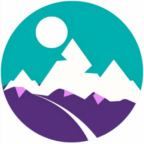Regardless of what industry you’re in, remote meetings have become a staple for many businesses around the globe. While they offer flexibility and convenience, staying focused during these digital marathons can be rough.
Each strategy below is designed to accommodate different styles, environments, and most importantly: meeting type. Obviously, you can’t do too much if you’re leading the meeting, but if you’re not then you are sure to find something that will help keep you from falling asleep 🙂
The Tactics
1. Doodle or Sketch
For some, the idea of doodling during a meeting might seem counterproductive. However, it is a little-known fact that doodling or sketching can be an effective tool to maintain focus during meetings. This tactic serves as a cognitive tool that keeps your brain active and engaged, especially during lengthy or complex discussions.
Instead of viewing doodling as a distraction, think of it as a way to connect your auditory and visual processing, which can help you retain information better. Keep a sketchpad and a pen handy during your remote meetings. Allow your hand to freely create patterns, shapes, or even specific drawings related to the meeting topics. An embarrassing caricature of your boss, maybe?
2. Walking Meetings

When you’re not required to be in front of a screen, consider turning the meeting into a walking one. Walking stimulates blood flow, boosts creativity, and naturally increases alertness. It also offers a refreshing change of scenery that can rejuvenate your focus. When our team was based in the same coworking space, we actually enjoyed meetings because we got to stretch our legs, enjoy the weather, and still get work done.
As you’re taking a remote meeting though, you’ll have to simply put on a pair of headphones and take your meeting on the move, be it around your house or even outside. As you walk, you may find that you’re able to pay attention more effectively, contribute better ideas, and think more clearly.
3. Fidget Tools
Fidget tools such as stress balls, spinners, or even clicking pens can work wonders for your focus during remote meetings. These small tools engage your tactile senses, which can help channel any nervous or excess energy that may otherwise lead to distraction.
One warning though: ensure they don’t become a distraction themselves or cause noise that may disturb the meeting. Subtle, quiet fidget tools are your ticket to maintaining your concentration and making meetings more productive.
4. Mini Workout
Sitting in one place for extended periods can make anyone restless, leading to a loss of concentration. Introducing a mini workout into your routine can be an effective solution to maintain your energy levels.
Whenever the meeting schedule permits, or if you start feeling your focus wavering, do a quick set of exercises. A few chair squats, desk push-ups, or even some stretching can reenergize your body and mind, helping you stay focused during the meeting. It goes without saying that this is ideal for remote meetings that don’t rely so much on you to talk.

5. Aromatherapy
Scent has a powerful effect on our brain and can significantly influence our mood and productivity. Scents such as peppermint, citrus, and rosemary are known for their invigorating properties and can enhance your concentration. Using a diffuser in your workspace or simply applying a few drops of essential oil to a tissue or your wrists can create a focused, productive meeting environment.
The study, Influence of Fragrances on Human Psychophysiological Activity, measured electrical activity in the brain as it relates to certain scents. Smells like peppermint and lavender (among others) were found to help with productivity and focus.
6. Narrate Your Focus
Another effective tactic to maintain focus during meetings is to silently narrate what’s happening as if you were a commentator. This tactic works on the principle of active engagement, which can help improve your focus and retention of the information being discussed.
As you listen to the meeting, mentally relay the points back to yourself. This helps to ensure you’re processing and understanding the content of the meeting.
7. Vision Board
A vision board is a tool used to maintain focus on specific personal goals, and it can be applied to remote meetings too. Arrange a board or space near your work area with images or words related to the meeting’s topic or your overall work objectives.
Whenever your focus begins to waver, a glance at the vision board can serve as a visual reminder of what you’re aiming for and why it’s important to stay engaged.
8. Flashcards
Flashcards aren’t just for studying; they can be a useful tool to help keep your focus during meetings too. As the meeting progresses, jot down key points or ideas onto flashcards. This not only helps you to stay engaged with the discussion but also creates a visual reference for later use.
Over time, you may find this active method of note-taking helps improve your recall of meeting details and keeps your focus sharp throughout the conversation.
Personally, while I don’t use flashcards, I will take notes in the same way. I will segment certain portions of my page to deal with specific portions of the meeting. That way I can easily categorize any notes where they need to go.
9. Change Your Seating

A simple change of scenery, even if it’s just moving to a more comfortable chair or switching to a standing desk, can do wonders for your focus. This can help to not get too uncomfortable from sitting in one position for too long, not to mention providing a fresh perspective.
Consider having a few different workspaces or seating arrangements within your home that you can rotate between to keep your surroundings interesting and your mind alert.
10. Use Multiple Screens
If you have the luxury of multiple screens, use them to your advantage during remote meetings. One screen can be dedicated to the video conference, while another can be used for referencing documents, taking notes, or handling any necessary related work (or maybe even watching Netflix…with subtitles!).
This way, you avoid constantly switching tabs or windows, reducing distractions and maintaining your focus on the meeting.
11. Understand Your Energy Peaks
We all have certain times of the day when we’re naturally more alert and focused. Understand your own energy cycles and, if possible, try to schedule your meetings during your peak focus times. You’re likely to be more attentive, contribute more effectively, and get more out of the meeting.
Chris Bailey gives a great overview of how to calculate your energy peaks, as well as how to make the most of those hours of the day that make the most sense for your body.
Test What Works For You
Staying focused during remote meetings can indeed be challenging, but with these tactics, you can keep your attention sharp and make the most of absorbing the content in the meeting. Experiment with these strategies and see which ones work best for your personal style and work environment. You may be surprised by how much more engaged and productive your meetings become!
Jared has worked remotely for 15 years in various marketing capacities, and has managed hundreds of marketing campaigns along the way. He has held freelance, agency, and in-house positions for companies large and small.


